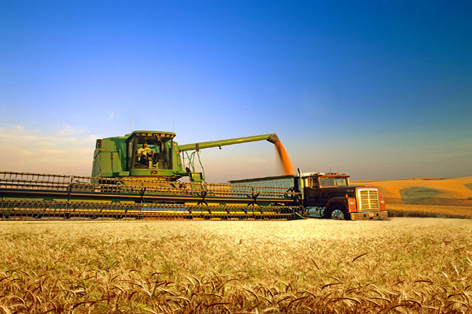We are not made for Wheat?
By MUDDASSIR AYAZ MAHMOOD
 Wheat,
the most popular cereal crop of world covers the acreage
that no other cereal cropcan ever get.
Wheat,
the most popular cereal crop of world covers the acreage
that no other cereal cropcan ever get.
Mostly, the wheat that is sown is for human consumption.
Asian countries are at the top in the production and also
the biggest consumers.
Pakistan stands at 6th in wheat production.
The present trends show that we will be going to
produce more wheat in thecoming years.
FAO reported wheat production during 2013 at 697.798
million metric tonnes.
The wheat production has surpassed previous yearís
production with an increase of 6.8 percent. China is the
biggest producer of wheat.
Pakistanís wheat production was estimated to be 25.2million
metric tonnes during the Rabi season 2012-13. Higher yields
were estimated before the harvest in China and Pakistan by
FAO.
Production is for consumption, so when talking about the
human wheat consumption in Pakistan, one person is eating
about 110 kg of wheat per year. (This is for a population of
175.31 millions to be compared with the wheat production).
Other cereals like rice and
maize are also being consumed by us. Rice is the second most
consumed cereal in Pakistan
with 12.13 kg/annum per capita.
We, the Pakistanis, have not been as demanding for wheat as
it is now. Have you everthought that the wheat which is
being eaten by us is really needed by our body in such a
great amount?
The un-healthy grains are being used to fulfill the needs of
malnourished students of primary schools.
Govt. of Pakistan assured the
donation of 0.5 million tonnes of wheat to the World Food
programme (WFP) so that it could be provided to the
malnourished children and to the students of primary schools
(Economic Survey of Pakistan, GOP, 2012).
So, how the big amounts of
unhealthy grains can fulfill the actual nutrients needed by
our body to work properly.
Wheat flour enrichment with Iron (Fe) programme, under Govt.
of Pakistan, was supported and funded by US government for
Pakistanis but that programme has never covered whole
Pakistan and the same is expected.
Another thing that is not
accounted while running such programmes, the iron in the
form of supplement that is supplied to the flour mills to
mix it with the grounded wheat is sometimes sold somewhere
else.
Any single cereal or a single food item that is consumed in
such a huge quantity that is unable to completely nourish
the demand of human body. As wheat flour is highly deficient
in minerals and vitamins.
Wheat is grown everywhere, no
matter it is fertile soil or soil with no other crop
achievable during the Rabi season. Almost 85% of the area
during Rabi season in Pakistan remained under wheat.
It is not possible that the
wheat that is produced have all the necessary nutrients
which must be present in it to be called it as healthy
grain.
When we take a look into near past, our elders were
consuming wheat along with other cereals. Wheat was not the
single most consumptive grain crop of Pakistan.
They tend to grow a variety
of crops or even wheat fields were having a large number of
barley and oats in them. On the other hand, barley, oats
were also grown in Rabi season and their flour was consumed.
Wheat was produced in lesser
quantity and during the harvest period (March-April) of
wheat, there has always been an acute shortage of wheat. So
they ate bread (ROTI) made from maize flour, ate barley
flour.
Barley is high energy cereal
with high fiber contentand lesser sugars in it.
The trend towards growing wheat and wheat everywhere must be
brought down. The need of the hour is not to eat wheat flour
alone, but try to consume a variety of cereals including
wheat, barley, oats, maize and rice.
Eating less wheat and
consuming a wide range of cereals and food (including
vegetables, fruits) can make the population healthy.
March 2014
Courtesy:
Gro Pak